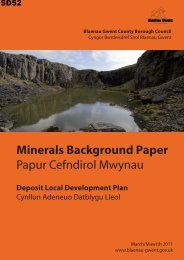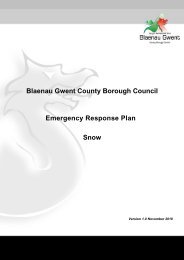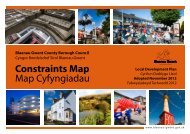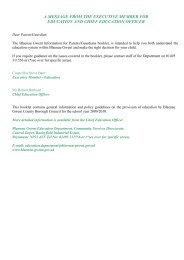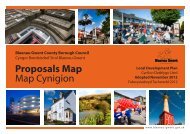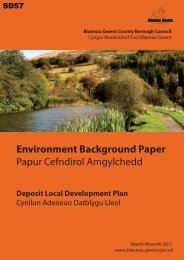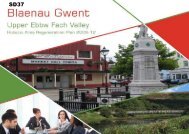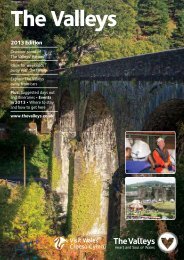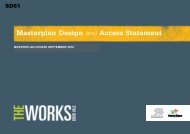Planning Policy Wales - Brecon Beacons National Park
Planning Policy Wales - Brecon Beacons National Park
Planning Policy Wales - Brecon Beacons National Park
You also want an ePaper? Increase the reach of your titles
YUMPU automatically turns print PDFs into web optimized ePapers that Google loves.
facilitates low and zero carbon developments (Sections 4.6, 4.10 and Chapter 12)<br />
• Minimise the risks posed by, or to, development on, or adjacent to, unstable or contaminated<br />
land and land liable to flooding. This includes managing and seeking to mitigate the<br />
consequences of climate change (see 4.2.4 and 4.2.5) by building resilience into the natural and<br />
built environment (Chapters 5,12 and 13).<br />
• Play an appropriate role to facilitate sustainable building standards (including zero carbon) that<br />
seek to minimise the sustainability and environmental impacts of buildings (Section 4.11).<br />
• Play an appropriate role in securing the provision of infrastructure to form the physical basis<br />
for sustainable communities (including water supplies, sewerage and associated waste water<br />
treatment facilities, waste management facilities, energy supplies and distribution networks<br />
and telecommunications), while ensuring proper assessment of their sustainability impacts<br />
(Chapter 12).<br />
• Contribute to the protection and improvement of the environment, so as to improve the quality<br />
of life, and protect local and global ecosystems. In particular, planning should seek to ensure<br />
that development does not produce irreversible harmful effects on the natural environment and<br />
support measures that allow the natural heritage to adapt to the effects of climate change.<br />
The conservation and enhancement of statutorily designated areas and of the countryside and<br />
undeveloped coast; the conservation of biodiversity, habitats, and landscapes; the conservation<br />
of the best and most versatile agricultural land; and enhancement of the urban environment all<br />
need to be promoted (4.9, 4.10.9, Chapters 5 and 13).<br />
• Help to ensure the conservation of the historic environment and cultural heritage, acknowledging<br />
and fostering local diversity (4.10.9 and Chapter 6).<br />
• Maximise the use of renewable resources, including sustainable materials (recycled and<br />
renewable materials and those with a lower embodied energy). Where it is judged necessary to<br />
use non-renewable resources they should be used as efficiently as possible. The use of renewable<br />
resources and of sustainably produced materials from local sources should be encouraged<br />
and recycling and re-use levels arising from demolition and construction maximised and waste<br />
minimised (4.10.4 and 4.10.9).<br />
• Encourage opportunities to reduce waste and all forms of pollution and promote good<br />
environmental management and best environmental practice (4.10.4, Chapters 12 and 13).<br />
Waste arising from demolition and construction should be minimised, and opportunities to recycle<br />
and re-use this waste promoted (4.10.4,).<br />
• Ensure that all local communities - both urban and rural - have sufficient good quality housing<br />
for their needs, including affordable housing for local needs and for special needs where<br />
appropriate, in safe neighbourhoods (4.10.11 and Chapter 9).<br />
• Promote access to employment, shopping, education, health, community, leisure and sports<br />
facilities and open and green space, maximising opportunities for community development and<br />
social welfare (Sections 4.5 and 4.6, Chapters 7, 10 and 11).<br />
48<br />
<strong>Planning</strong> <strong>Policy</strong> <strong>Wales</strong> Edition 3 - July 2010 - Chapter 4 <strong>Planning</strong> for Sustainability


